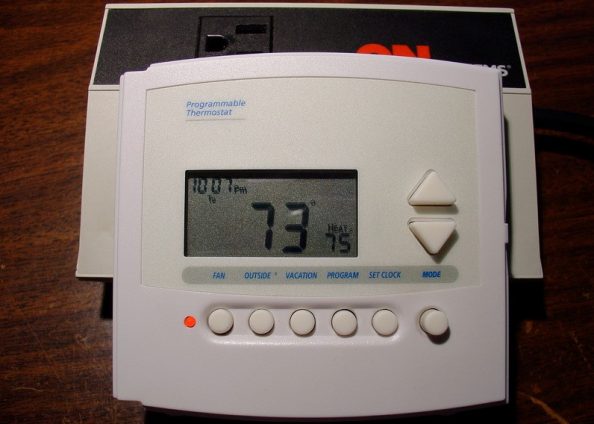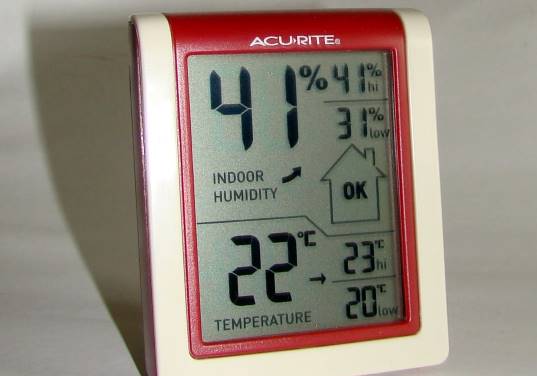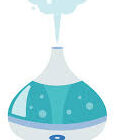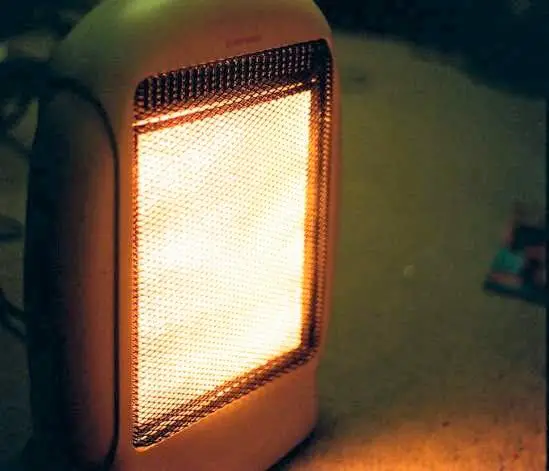How Does Heating Affect Humidity? It Lowers Relative Humidity
During the winter, when it is freezing, you have no option but to run the heat. And you will need to crank the humidifier too. This is because heating decreases the humidity in the house. If you are not careful, you may end up experiencing the symptoms of sleeping in a dry room.
Of course, if you have a furnace humidifier, you need not worry about the humidity because it will raise it automatically.
But still, this does not answer the question of: Why does heating decrease the humidity? Heating does not decrease the humidity. It is the air’s moisture-holding capacity that changes. There is a strong relationship between humidity and temperature. At 30 degrees Celsius, the humidity in one volume of air can be 4 percent. At a much lower temperature of minus 40 degrees Celsius, the humidity in the same volume of air can be as low as 0.2 percent.
The capacity of the air to hold moisture changes with the temperature

At different temperatures, the air can hold different amounts of moisture. At very low temperatures, it is going to hold less water. Of course, less moisture in the air means low humidity in the house, hence the need to run the humidifier.
But what REALLY happens when you heat the room? The air becomes hot, and it does what hot air does—it rises.
Hot air is less dense, so it rises and carries the moisture to cooler spaces in your home. The humidity moves from a place of high concentration to one of low concentration.
That is why you need to increase the moisture in the room, and the best way to do this is to switch on the portable humidifier.
Generally, summers bring high humidity in Florida, California, Texas, Seattle, and many other places. But when winter comes, things change. In the cold season, you turn on the heat. The air expands, and so does its capacity to hold more water.
To help you understand this better, imagine that the air in your room holds 3 liters of water at 100 percent humidity when it is fully saturated.
When you heat the same air, it expands, but the amount of water in it remains the same. Only now, it is distributed over a larger air volume. Thus, the air feels less humid, but the amount of moisture is still the same as before.
Should you turn on the heat to lower the humidity in the room?
If heating lowers the humidity, you might ask whether you can turn on the heat to lower the humidity in your home.
You could, but the best choice remains to run the best dehumidifier. It is going to be more effective in lowering the excess moisture, and it will be more cost-effective than heating the room.
When you heat the air in the room, it expands, and it can therefore hold more moisture. The more moisture the air holds, the lower the humidity inside the room will be. However, raising the temperature is only going to lower the RH (relative humidity) and not the absolute humidity.
A dehumidifier is also easier to control because it has a built-in humidistat, which reads the level of humidity in the room.
If the humidity goes above the set threshold, the dehumidifier turns on automatically. It also stops running as soon as it attains the set humidity level.
Other options you can consider include opening the windows to improve ventilation. You can also use an exhaust fan to lower the humidity.
If most of the humidity is coming from the crawl spaces, get a dehumidifier for the spaces. You can get a dehumidifier with drain hose for basement, so that it can continuously draw water from the air for a long time. It will drain the water into a sink or outside.
If you have to dispose of the water over a vertical height, get a dehumidifier with a drain hose and pump. It will consume slightly more power, but it will be worth it.
How to maintain good RH during winter

In the winter, we spend most of our time indoors. Therefore, we have to run the heating, which lowers the relative humidity in the room. Just as there are effects of high humidity on the human body, there are side effects of being exposed to dry air.
If you are drying clothes indoors in the winter (well, who isn’t?), you are going to turn up the heat. Luckily, the water that evaporates from the laundry is added to the air in the room, raising the humidity. Still, if this is not enough, please run a humidifier.
Therefore, you need to run a humidifier alongside the heating. Both the HVAC and a portable humidifier can run concurrently, so you can enjoy the best of both worlds: heat and good RH.
If the air in the house is too dry, your family will experience things such as parched skin, cracked lips, static electricity, and many more.
Other ways to lower humidity in the room
Do not rely on heating the room to remove the excess moisture from the air. There are other methods, if you do not want to use a dehumidifier.
Here is what you can do:
Open the windows
Please bear in mind that the outdoor humidity can affect the indoor humidity. Therefore, check the hygrometer or the humidistat first before you open the windows.
Quite often, the outdoor humidity is lower than the indoor one, but don’t assume anything. Check the humidistat as it measures the dew point temperature, which can tell you how humid the temperature will be.
Cover the pots as you cook
The kitchen can be a high-humidity place because there is water and heat most of the time. Besides, when you cook your food, there is a lot of steam.
This steam eventually raises the humidity. If you cook a lot, consider getting one of the best dehumidifiers for small spaces. It is going to control the humidity level.
Let the humid air out of the bathroom
The bathroom is a high-humidity space, so you might consider getting a mini dehumidifier. If you do not remove the excess moisture in the air in the bathroom, it spreads to the other rooms. Make the showers fast, and open the windows so that some humid air can escape.
Why does humidity go up when the heat is on?
While this might seem to be in contradiction to what we have put forth here, warm air does seem to be more damp than cold air.
But as we have seen, the capacity of the air to hold moisture changes from time to time, depending on the temperature.
When it is warm, the air feels damper. This is because heat expands the air, and then the air holds more water molecules.
Therefore, at 30 degrees Celsius, the air can hold more water molecules than when the temperature is -10 degrees Celsius.
The seemingly high humidity when you turn on the heat is short-lived, though. While the air will feel damper on the skin, if you use a hygrometer to measure the relative humidity, you will realize that it is lower. This is why you need to run a humidifier in winter.
The key thing to remember here is that raising the temperature affects only the relative humidity and not the absolute humidity.
Wrapping it up
Heating decreases the humidity in your house because hot air expands and therefore holds more moisture. Besides, the hot air rises, and since it is moist, or in the form of vapor, it takes the moisture away from your room. This lowers the RH further.
To prevent the onset of too dry air in your house, run heating and at the same time, run a humidifier. It pumps out mist, which raises the humidity level.
Remember, in winter, you cannot avoid heating your indoor air because of the cold weather. Also, keep an eye on the hygrometer and if the RH from going below 30 percent, run the humidifier.

